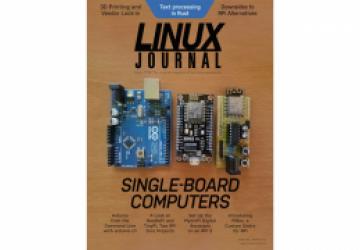The Single-Board Computers Issue

When I was a child in the 1980s, I had a computer—a very 1980s computer.
It had a hefty, rectangular, grey case made of some sort of industrial sheet metal. Two plain (but rather large), square buttons adorned the front, begging to be pressed: "Reset" and "Turbo". On the right side of the case, far in the back (nearly out of reach), sat an almost comically large, red power switch. It was the kind of lever that would look right at home in an action movie—used to cut the electricity to all of New York City.
When you "threw the switch", the PC turned on with a deeply satisfying, soul-reverberating, "ka-THUNK".
Inside, sat an Intel 286 CPU decked out with 640k of RAM, which, as some unnamed person may or may not have said, "ought to be enough for anybody". For mass storage, it had a big, double tall hard drive. The connection for this drive wasn't SATA, or SCSI, or even IDE. We're talking about an MFM connection here, baby (MFM stands for Modified Frequency Modulation). As a child, I simply assumed MFM had something to do with the fact that you could hear the hard drive spinning up from down the street.
I kid, I kid. You couldn't actually hear the hard drive—not over the roar of the fan in the power supply.
It was, to say the least, a beast—beastly in size, beastly in power usage and beastly in price.
Flash-forward [counts on fingers, gets depressed at own age, downs a pint of ice cream, resumes writing article] 35 years later. We now have single-board computers (SBCs) with no fans—heck, no moving parts whatsoever—running completely silently.
These SBCs have several hundred times (in some cases, several thousand times) the RAM. Ditto for storage. With significantly faster networking (including wireless, which wasn't even a thing on that old 286) and processing speed that, even among the slowest SBCs, is so much faster, it's almost mind-boggling.
All of this is contained within a physical size often smaller than a credit card and at a price somewhere roughly between one hamburger and...a couple more hamburgers.
These small, silent, low-power, low-cost computers have changed things. They've made general-purpose computing more affordable (and durable), bringing down costs in data centers and allowing solo makers and small companies to create computer-driven hardware projects that would have been nearly impossible to tackle in days gone by.
Here in 2019, we've even got a whole heaping helping of SBCs from which to choose: Arduino, BeagleBoard, Gumstix, ODROID, Pine64, Raspberry Pi—the list goes on and on. We are spoiled for choices.
In this issue of Linux Journal, we look at SBCs from multiple angles. We start the Deep Dive section with "Arduino from the Command Line: Break Free from the GUI with Git and Vim!"—a detailed look into how to utilize the newly created arduino-cli application to work with Arduino devices directly from, you guessed it, the command line, written by Matthew Hoskins, the Senior Enterprise Architect at New Jersey Institute of Technology.
Then, in "Indie Makers Using Single-Board Computers", I sit down with the minds behind two solo projects based around the Raspberry Pi Zero (the smallest of the Raspberry Pi family): the small, PDA-like NoodlePi and the "oh my gosh, it's like an itty-bitty gameboy" TinyPi.
Next up, Professor Jan Newmarch takes us on a guided tour of how to set up Mycroft (a personal digital assistant that is open-source and Linux-based) on a Raspberry Pi 3—complete with a look at how to build Mycroft "skills" (in this case, interfacing with smart bulbs) using Python.
Turning to the Enterprise space—because these single-board computers aren't just for hobbyist projects—Charles Fisher gives us a review of the newly released Raspberry Pi 3 version of Oracle Linux, including instructions for installing Oracle on the Pi 3 using the Btrfs filesystem.
We finish with a look into PiBox—a custom Linux distribution for the Raspberry Pi, with cross-compiled applications, intended for distributed media playback, written by the man behind the project himself, Michael J. Hammel.
These single-board computers are incredibly versatile. The size and price point alone open up whole worlds of possibilities that seemed out of reach just a few years ago, both in mobile computing and enterprise-grade server farms—truly amazing.
Though, if I'm being honest, I do rather miss that big, red power switch.
Also, now I want a hamburger.
Subscribers, you can download your March issue now.
Not a subscriber? It’s not too late. Subscribe now and receive instant access to this and ALL back issues since 1994.
Want to buy a single issue? Buy the March magazine or other single back issues in the LJ store.









